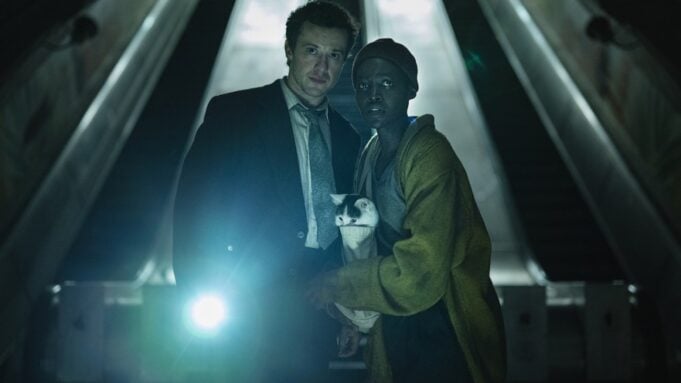“A Quiet Place” has become a horror franchise with few equals.
The third entry in Paramount’s post-apocalyptic series, “A Quiet Place: Day One,” beat expectations with $53 million domestically and $98 million globally in its box office debut. It landed the best start of the three films, above the original 2018 “A Quiet Place,” ($50 million in its opening) and the 2021 sequel, “A Quiet Place Part II” (a $48 million debut, but one that happened during COVID). The enduring appeal of the trio of films, the most recent entry serving as an origin story, signals that “A Quiet Place” has enough power to fill seats at multiplexes based on the strength of its name. It joins the company of other big horror properties, like “The Conjuring,” “Paranormal Activity” and “Insidious,” all of which remain popular but have experienced some diminishing returns over the course of many sequels and spinoffs.
“There have been bigger horror movies,” says David A. Gross, who runs the movie consulting firm Franchise Entertainment Research, pointing to Stephen King’s “It” adaptations (the first opened to $123 million and grossed $704 million; the sequel opened to $91 million and earned $473 million) as well as last October’s “Five Nights at Freddy’s” (the video-game adaptation debuted to $80 million and ended its run with $291 million). However, Gross adds, “No series has been as consistent after three films as this. The hook — keep quiet or else — is going to carry it indefinitely into the future.”
“A Quiet Place Part III” is already in the works and is speculated to be a direct sequel to the 2021 installment. Details — including the involvement of franchise creator John Krasinski and stars Emily Blunt, Millicent Simmonds, and Noah Jupe — haven’t been confirmed. But considering the sustained interest in the property, Gross isn’t wrong to expect another commercial winner.
Yet the triumph of “Day One” is notable because spinoff stories rarely live up to sequels at the box office. “Furiosa: A Mad Max Saga” missed the mark in May, and while last year’s “The Hunger Games: The Ballad of Songbirds and Snakes” was commercially successful, its ticket sales didn’t come close to matching the original saga.
Prequels are tougher sells because moviegoers typically know what happens later in the story. They are especially challenging when they don’t have stars from the original. However, “A Quiet Place: Day One” defied the odds and expanded its audiences even though Blunt and Krasinski, who propelled the first two films to box office glory, didn’t return for this entry. The series kept up the pedigree by casting Oscar-winner Lupita Nyong’o opposite “Stranger Things” breakout Joseph Quinn in the story set during the early stages of a New York City alien invasion. “Pig” filmmaker Michael Sarnoski took over directing duties from Krasinski, who contributed to the story and served as a producer.
Analysts and critics believe that “A Quiet Place: Day One” scored at the box office because it managed to justify its existence and feel like a worthy entry in the franchise. Another favorable factor is the genre-bending quality. It’s more sci-fi than slasher, so although it’s dread-inducing (to be sure), the movie isn’t scary enough to turn away peripheral fans of the genre.
Love Film & TV?
Get your daily dose of everything happening in music, film and TV in Australia and abroad.
“It didn’t feel like a money grab, but rather a component of the story that needed to be told,” says senior Comscore analyst Paul Dergarabedian.
Paramount’s president of domestic distribution Chris Aronson says the property’s supporters had been asking the studio for an origin story about those chilling monsters that eventually forced the population into hiding from terrifying, sound-hunting creatures.
“We listened to the fans about what they’d be looking for,” says Aronson. “Giving them a new city as the setting and fresh characters all conspired to broaden the audience.”
Dergarabedian believes these films are particularly fun to watch in crowded cinemas because silence is the key to survival. Like its predecessors, “Day One” contains minimal dialogue and a lot of tense, breathy action sequences. That means that inside the auditorium, any gasp, shriek or slurp from a soda cup can reverberate throughout the room.
“The communal experience makes it electrifying,” Dergarabedian says. “Audiences are scared to eat popcorn or make noise.”
“A Quiet Place” is one of the most consistently well-reviewed horror franchises. The moviegoing public and critics responded enthusiastically to the newest PG-13 film, which notched a solid B+ CinemaScore and 84% on Rotten Tomatoes. Opening weekend crowds skewed slightly male (men accounted for 53% of ticket buyers), while millennials and Gen Z turned out in force with 55% of patrons aged 18-34. Many of those audience members opted to watch “Day One” on the biggest screen possible with nearly 40% of domestic returns coming from premium screens like Imax and Dolby.
“Reviews and audience scores are down slightly from ‘A Quiet Place Part II,’ but they’re still excellent for the genre,” says Gross.
There’s one potentially worrying sign as the franchise inevitably expands; the budgets keep getting bigger. The first movie, which became a sleeper hit with $340 million globally, cost a trim $17 million. The sequel, another winner with $297 million globally, moved comfortably to mid-budget territory with its $61 million price tag. “A Quiet Place: Day One” was slightly more expensive, costing $67 million to produce. Given its initial global ticket sales, the prequel is well-primed in its theatrical run. But Paramount needs these films to remain mid-budget propositions to justify more and more returns to this dystopian universe.
After all, the only thing scarier than ruthless, sound-hunting monsters are shrinking profit margins. At least, if you’re the studio footing the bill.
From Variety US































